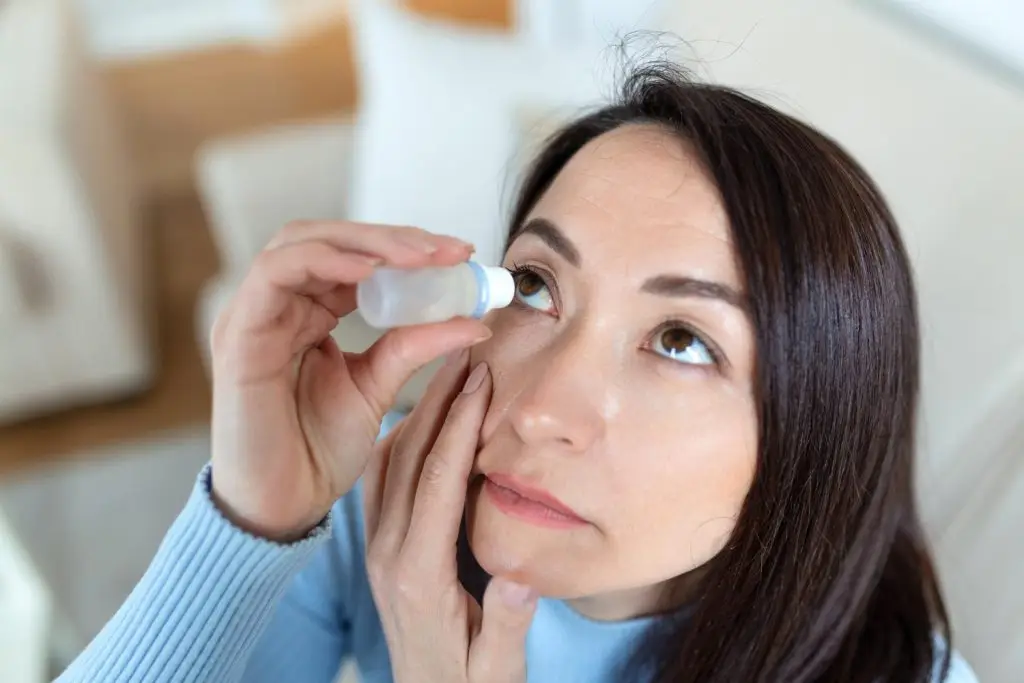
טיפות דמעות – מה זה ולמה משתמשים בהן?
טיפות דמעות הן תמיסות רפואיות או קוסמטיות שמטרתן להקל על
Red eyes, a condition medically known as "conjunctival injection", can be caused by a myriad of factors, from allergies to fatigue. Regardless of the underlying cause, the appearance of red eyes can be disturbing and uncomfortable. To combat this problem, red eye drops have become a popular remedy. Here we will delve into the types, benefits and proper use of these eye drops to provide you with a comprehensive understanding of their effectiveness and application.

Eye drops for red eyes mainly fall into two categories: vasoconstrictors and lubricants. Each type serves a separate purpose and is formulated to address specific symptoms associated with red eye.
1. Vasoconstrictors:
Vasoconstrictor eye drops work by narrowing the blood vessels in the eye, thus reducing redness. Ingredients such as tetrahydrozoline, naphazoline and phenylephrine are usually found in these drops. Although they provide quick relief from redness, they are not suitable for long-term use. Prolonged use may lead to repeated redness, when the eyes become even redder than before when the drops are stopped. Therefore, it is essential to use vasoconstrictor eye drops sparingly and strictly according to the instructions.
2. Eye drops as tear substitutes:
Tear substitutes, also known as artificial tears, do not reduce redness by constricting blood vessels. Instead, they work by providing moisture and lubrication to the eyes to relieve dryness and irritation, which can contribute to redness. These drops usually contain ingredients such as sodium hyaluronate, carboxymethylcellulose, glycerin. Lubricating eye drops are suitable for frequent use and are often recommended for people who experience redness due to dry eyes.
The use of eye drops for red eyes offers several advantages, making them a convenient and effective solution for temporary relief.
1. Quick relief:
Vasoconstrictor eye drops provide rapid relief of redness, making them ideal for situations where an immediate improvement in the appearance of the eyes is desired. Their quick-acting nature makes them a popular choice among people looking for quick relief from red eyes.
2. Relaxing effect:
Tear substitutes not only reduce redness but also soothe dry and irritated eyes. The ingredients in them provide long-lasting moisture, relieve discomfort and promote eye health. Regular use of eye drops can help keep the eye moist, and reduce the frequency of episodes of redness.
3. Convenience:
Eye drops for red eyes are available over the counter at pharmacies, making them a convenient option for managing occasional redness. Their compact size allows for easy portability, allowing users to carry them wherever they go.
To maximize the benefits of eye drops for red eyes and minimize possible side effects, it is essential to use them correctly:
Eye drops for red eyes are a valuable tool for the temporary management of eye redness caused by various factors. Whether you choose vasoconstrictor eye drops or an ointment, understanding their types, benefits, and proper use is essential to achieving optimal results and maintaining eye health.
While these eye drops offer quick and convenient relief, they should not be considered a long-term solution to chronic redness or eye disease. If you experience persistent red eyes or other concerning symptoms, it is essential to consult an ophthalmologist for a comprehensive evaluation and appropriate treatment recommendations.
In conclusion, eye drops for red eyes can be an effective and convenient solution for managing a red eye event. By choosing the right type of eye drops and using them correctly, you can enjoy brighter, more comfortable eyes and maintain optimal eye health.

טיפות דמעות הן תמיסות רפואיות או קוסמטיות שמטרתן להקל על

ויטמין C הוא אחד הוויטמינים החיוניים ביותר לבריאות העיניים, הודות

מרכז מומחים לאבחון וטיפול מתקדם בתסמונת העין היבשה ומחלות פני שטח העין















